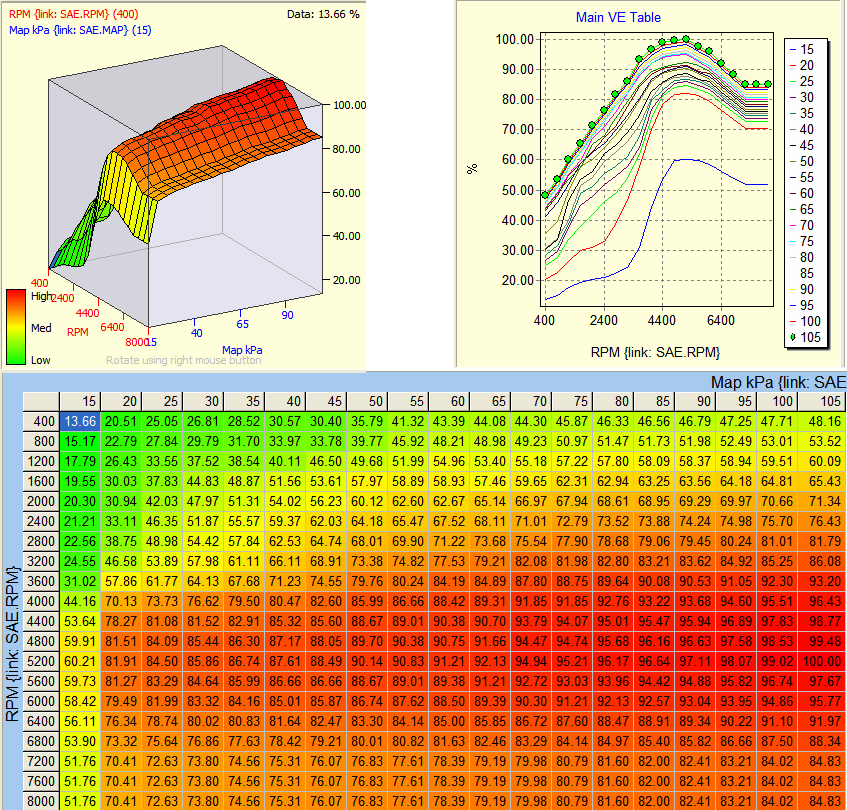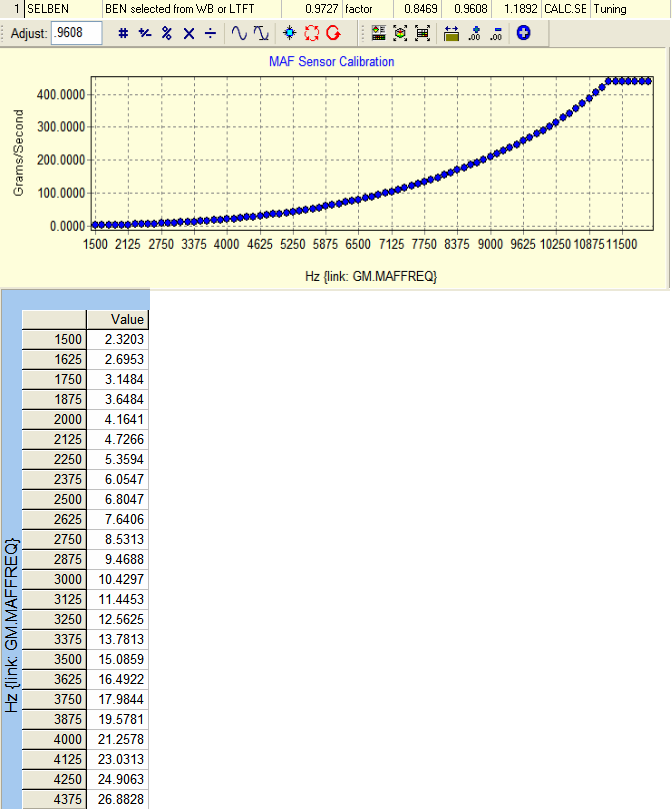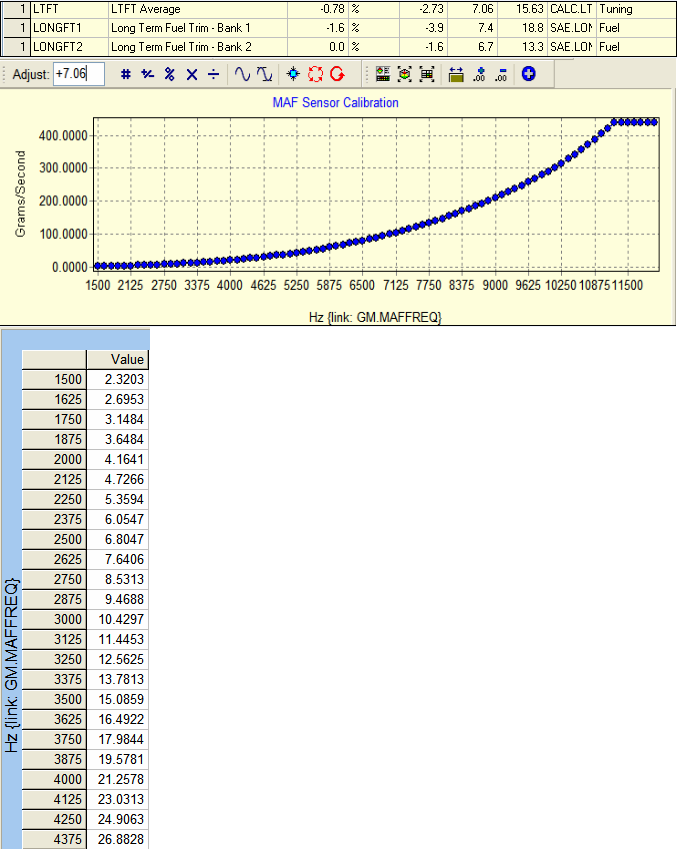In-Memory-of-Shawn-Sankey
Tuners Checklist: Mechanical-Issues-that-prevent-Good-Tuning
I. Validate Pids:
1. Connect Scan Tool to your Vehicle (Select Controller)
2. Turn Ignition Key to 'On'
3. Scan Tool>>Info>>Validate Pids
II. Scan Tool Set-Up
1. Creating Pids
http://download.efilive.com/Tutorials/Interactive/How to Create a PID List.htm
2. Creating Maps
http://download.efilive.com/Tutorials/Interactive/How to Create a Map.htm
Please also do this: on each of the Data, Row, Col tabs checkmark Show Units.
3. How to copy and paste.
http://download.efilive.com/Tutorials/Interactive/How to Copy and Paste with AutoVE.htm
4. Map Filters
http://download.efilive.com/Tutorials/Interactive/How to create a filter.htm
Note: when copying a map from the scantool, always use copy-with-labels, and then in the tunetool use paste-with-labels or paste-multiply-with labels (whichever is appropriate) to modify the target table.
III. CALC.VET Tuning Tips
1. B0701: Disable Catalytic Converter Protection
Insures accurate stoich and PE mode/WOT Fueling
2. B0120: Change RPM Threshold for Airflow Calculation from 4000 to 400
Eliminates any Airflow Correction/Contribution from the VE Table
(if your transient filter is sufficiently wide, it will filter out VE contribution)
3. B3308: Disable DFCO: Change B3308 (M6) to 140C Change B3313 to 140C
Accurate fueling computations
4. B4105: O2 Switch-points to 450 Millivolts
Smoother MAF & VE Table
5. B3618: PE Modifier Based on Rpm: EQR 1.16
Safe adequate Fueling regardless of Fuel Type
6. B3616: PE Enable: make sure PE enables as load becomes significant
(e.g. below 60% TP below 3200 rpm, 35% TP above 3200 rpm).
7. B3608 and B3609: PE Delay: set these to zeros.
IV. Logging Techniques:
45-60 minute log is best. Allow Engine to warm to normal operating temperatures before logging. Include Idle, cruise, acceleration, deceleration, and WOT. Apply as much steady throttle as possible. Avoid 'jackrabbit' starts and rapid braking. Use lower gears to hit higher Rpms and lower Maps if desired.
PE Mode/WOT:
PE Mode is best performed utilizing 100% TPS (WOT). This is because a number of Fuel Dynamic Parameters are kept steady and constant (evaporation, cylinder wall-wetting, etc). Also, a steady 100% TPS insures accurate computation of the MAF Airflow. Avoid part-throttle PE Mode Tuning.
V. Blend MAF and VE Tables
The first time you are Tuning via CALC.VET you will be pasting your new Values into B0101. You must 'blend' those values into your existing VE Table. Manual smoothing is superior to 'computer' smoothing. However, the first few logs it may be appropriate to utilize the EFILive 'Smoothing' Tool. You may also smooth using the 'Smooth cells without decreasing the min/max range' Smoothing Tool alone or in combination with the above Smoothing Tool.
Tips for VE Table Smoothing:
1. Adequate Cell Count (45-60 minute log).
2. Proper Data Filters
3. Steady State Throttle
4. Driving techniques.
5. VE Table Values generally rise as Rpms, MAPS increase. The peak VE Values will mimic your Torque curve. For a LS1 highest VE Values are generally found at 4800-5200 Rpms.
6. Eliminate Spikes.
7. Manually interpolate for areas you can not hit. This is essentially important for RPMs' below Idle (400) and above 6400 Rpms..
Blended VE Table B0101:
Normalized to 100%.
Note: General VE Table Smoothing Rule: VE Values almost always increase with RPM/MAP
MAF Table Smoothing:
Normally the MAF Curve will slope exponentially from 1500-12,000 Hz in a smooth fashion. You can view this on the Two-Dimensional chart found on Table B5001. Occasionally when logging SELBENS the MAF Curve can become a little jagged. You might want to manually 'smooth' those cells using the two-dimensional graph. You want to eliminate spikes and keep the curved function relatively smooth.
The second technique is average your existing SELBENS over the entire curve. This insures a natural slope and will produce better results.
Blended MAF Table B5001
Note: Keep this MAF Curve as smooth as possible. No jagged points or spikes.
You must extend the MAF Curve to 12,000 Hz for accuracy.
Closed-Loop MAF Tuning/Blending (No Wideband):
When performing a Closed-Loop MAF Calibration, normally only those MAF frequencies below 7000-8000 Hertz are adjusted. This leaves the MAF Frequencies above 7000-8000 Hertz totally 'uncalibrated'. A technique to estimate the upper portion of the MAF Curve is to add the Average of the LTFT1 and LTFT2 Banks (LTFTAVR), and apply that percentage to the upper portion of the MAF Curve. If done correctly the entire MAF Curve will have the same slope from 1500-12,000 Hz.
Table B5001 Example
Note: Keep this MAF Curve as smooth as possible. No jagged points or spikes.
You must extend the MAF Curve to 12,000 Hz for accuracy.
VI. Refining your CALC.VET Tune
1. Reset LTFT Trims:Connect Scan Tool to Vehicle >>Ignition Key On>>Calibration>>Long Term Fuel Trim Cells>>Reset
2. Eliminate Positive Trims:
The PCM will add Fuel to PE Mode/WOT if LTFT's are positive. You can eliminate them by adding +1 to +2.5% to All Values in the MAF Curve. Then Tune PE Mode/WOT using SELBENS.
3. Eliminate Knock Retard:
Best to use Dyno to find optimum spark and eliminate KR. For street, eliminate KR by reducing Spark to a value -2 below KR threshold.
Example LS1 Spark Table: Idle-Tips-amp-Tricks
4. Idle:
See LS1 Idle Tips & Tricks: Idle-Tips-amp-Tricks
VII. Additional Notes
Calc.VET vs Calc.MAFT
Mode Relationships
Semi-Open Loop Mode
IFR Calculations
( those are contained in this thread: Summary-Notes )









 Reply With Quote
Reply With Quote